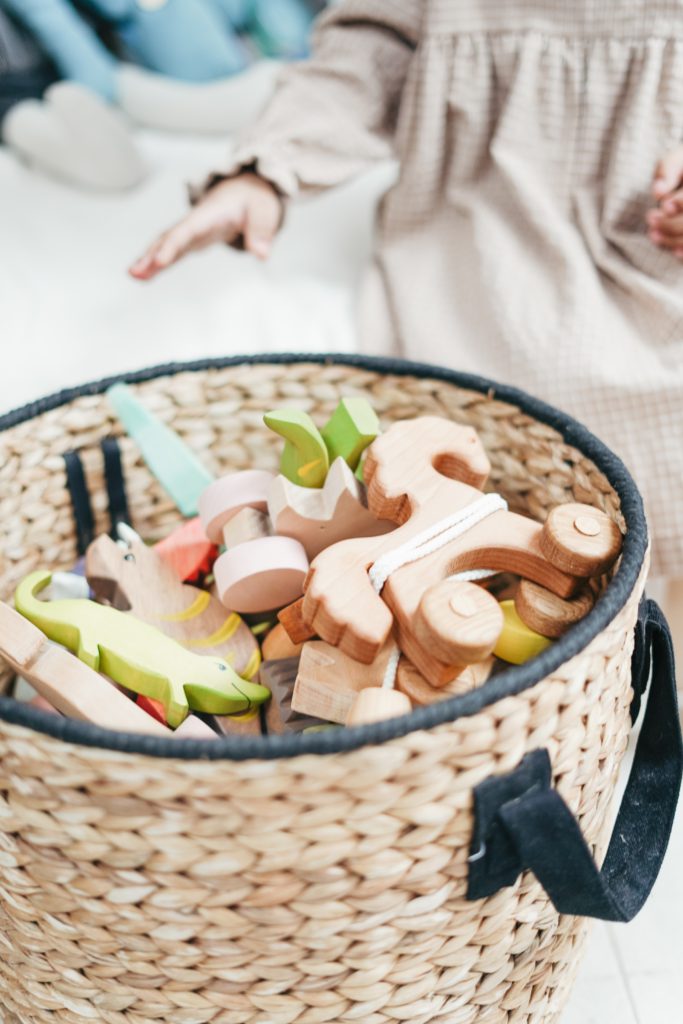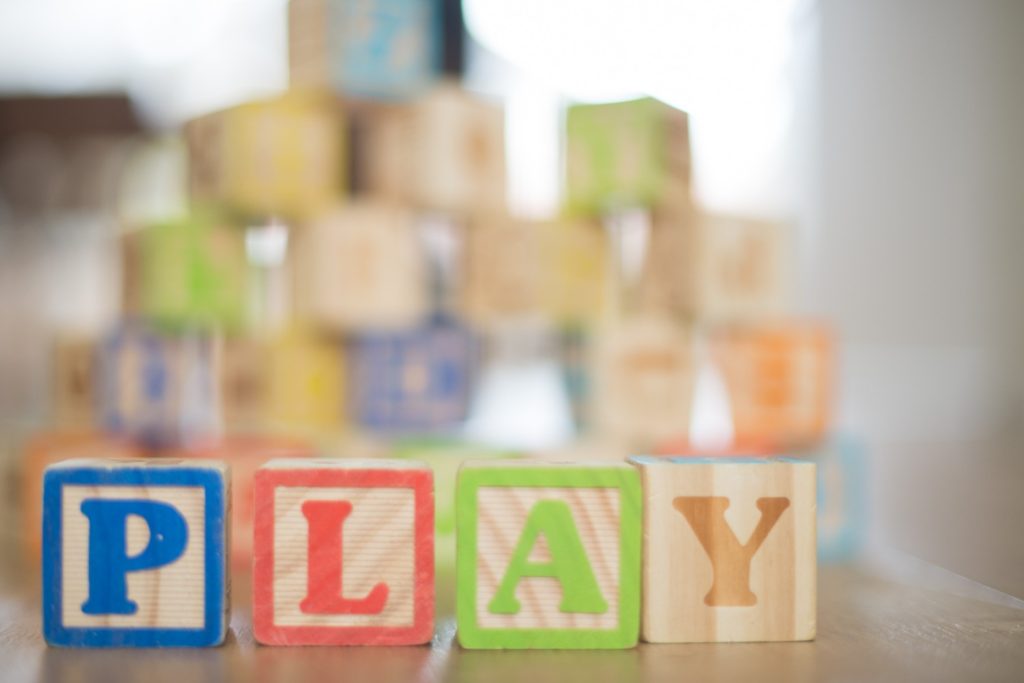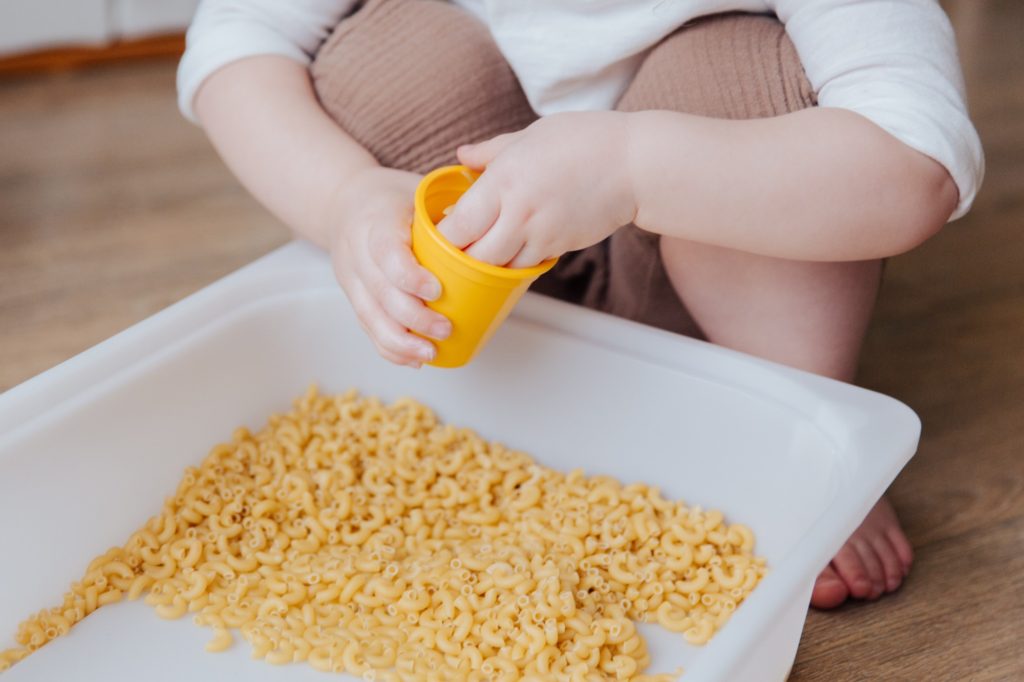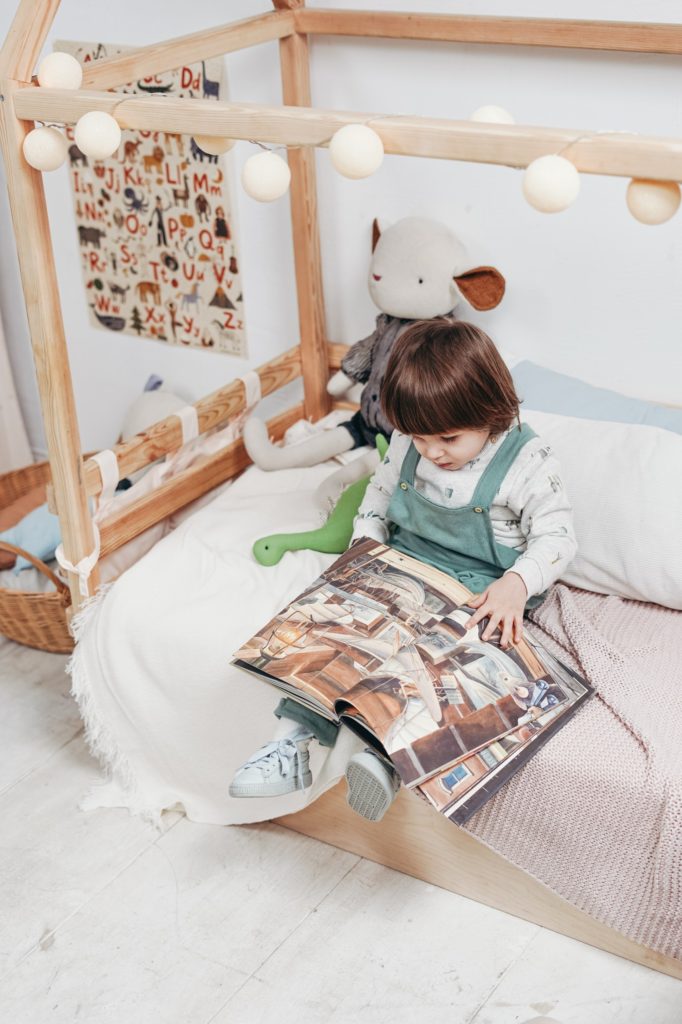Read this in:
 اردو (Urdu)
اردو (Urdu)
To listen to this post in Urdu, please click Play:
I stumbled upon Montessori as I was browsing through ideas for my daughter’s room. The minimalistic design caught my eye and since we had just moved to a new apartment, I was keen on creating a space with a low budget without compromising on learning.

I would preface by stating that I am not a Montessori teacher by training. I am a mere parent who has a google diploma (if there is such a thing) in early childhood education and mostly learned by trial and error on my two subjects (I mean offspring) since I turned into a work at home mom.
As new parents, we often find ourselves looking for the best way to teach our kids without breaking their brain or losing our mind. I found that Montessori offered many answers and appealed to me because of its simplicity.
It made me think about learning in a different way. As a parent new to the education system, I was worried if this different approach would work at all, but the science says otherwise.
A longitudinal study showed that the students who had gone through a Montessori preschool and elementary program had a significantly better performance on math/science scores compared with a peer control group.
Another article cited the beneficial effect on children’s education regardless of income or race, with emphasis on the involvement of parents and starting at a young age.
Style and learning combined
My search led me to beautiful Pinterest boards with the style that spoke to me. But before implementing it I wanted to learn about the principles and history of what Montessori is all about.
Montessori is a method of education. It’s namesake Dr. Maria Montessori was the first female doctor in Italy.
In 1907 while she was working with impoverished children in inner-city Rome, she noticed that they were interested in playing with the crumbs of food intently even after they had eaten. That ignited her curiosity to learn more about how their behaviour was related to their development.

Through her observations, she concluded that there were different phases of brain development and each stage was in three-year increments.
She called each phase a plane of development. The first plane from zero to six years is infancy and 6-12 childhood, 12-18 adolescence, and final plane 18-24 maturity. She emphasized supporting the natural development of children at each plane so that it optimized development as a whole being.
Changing the conventional learning method
Montessori went on to develop her own method of educating children with an emphasis on controlling the learning environment. She established the first children’s house [casa] in Rome in 1907, educating children with her approach.
Currently, Association Montessori Internationale has several resources available (some free right now due to the Pandemic) for teachers and communities.

I looked back into the reasons I loved Montessori and came upon these principles that explain what it is all about. So let’s start at the very beginning (as Jule Andrews would say ‘” a very good place to start!”)
Freedom of movement
Children need to move around to learn from experience. An example would be by providing floor beds to encourage independence from infancy. Their environment helps them choose what they want to do.
Learning from older children
The class is not grouped into the same age kids. Usually, it is divided into three-year groups. The learning of older students in the group is reinforced by teaching what they know to the younger ones. This teaches them to help each other and ask for help at a young age.
Value the process
Longer uninterrupted periods to complete work are the norm. Instead of having short time periods and jumping from one activity to the next, the emphasis is on letting the child spend time to figure out the task.
Inclusion of practical life skills

This has to be my favorite one. We all know how much kids like to do everything on their own. This is something we can incorporate quite easily into the existing routine, as I will discuss in another post.
From as young as 18 months, kids are taught essential skills such as setting the table, pouring drinks and preparing snacks for themselves and afterward washing and putting away their dishes.
Emphasis on sensory development
This was something I found very useful while trying to teach my daughter Urdu alphabet. By using material that encourages sensory exploration, kids absorb the lesson in a more organic way.
I discovered several budget-friendly ways to do it at home with your children which I am going to share soon. Emphasis is on creating a beautiful environment with a built-in sense of order.

Teachers are guides
They work one on one rather than working with the whole group. This was very liberating for me. I learned that to become a better teacher, you need to resist the urge to do everything yourself.
In this method, your role is a facilitator and not the traditional teacher. In a Montessori classroom, the ‘guide’ (as they are called) would allow the child to try to work out the problem by themselves using existing knowledge and if they are struggling with it, they would guide them.
Freedom within limits
They get to choose activities from a prepared shelf. Tasks are usually designed with a specific self-correcting error. Activities are arranged neatly in trays.
They decide where to sit while working. They are not allowed to distract other students or run around. But they are encouraged to make their own decisions by choosing their own activities.
Individual attention
The guides assess the needs of children and lessons are tailored to each child. This is doable as the children are mostly working independently and practicing their skills on their own.
There are no rewards and punishments. Montessori believed that children have an innate need to do productive work. The guides offer thoughtful feedback and questions to help the child through his independent desire to learn. The focus is on the process of learning rather than the end result.
Holistic learning
The focus is on the physical, spiritual, emotional, social, and mental development in a supportive environment. Hence, it is not just about learning the alphabet but also developing other essential skills to be a member of the community.

Providing a prepared environment
After learning about the method itself, I realized that the environment is a huge part of helping kids learn on their own. Maria Montessori emphasized creating beautiful surroundings. Placing activities on low shelves encourage independence. Good quality toys (wooden and natural materials preferably) combined with plenty of natural light create an inviting area for learning.
I was able to look at designing my kid’s room with a whole new perspective. I did not feel the need to fill up every nook and cranny with flashy toys and other gadgets which do nothing to help kids focus. I also found out over some time how it boosted my daughter’s independence and helped me be more patient as well.
It may seem intimidating to try this in your own home. But I would suggest starting with some basics such as keeping toys accessible. I will be discussing how I used these as guides to design my kids room soon. So do not forget to join our email list to find out.
So, which one of these did you like the most? Are you already doing some of these things? Let me know below.
Read this in:
 اردو (Urdu)
اردو (Urdu)


Love this article. Thanks for giving us so much info on Montessori style of learning. I would love to see some pics of your child’s room.
Thank you for stopping by. I am planning to write a post with some of the ways I was able to implement this. I will try and include pictures where possible too.
Really insightful and enjoyed reading this. I’m curious to see how you set up your daughtera room. Perhaps a seperate post?
I appreciate the whole idea of your blog but more importantly found this particular blog post to be very insightful and helpful. Thank you for this informative piece of writing.
Thank you so much for stopping by. I love your input and am working on creating more helpful posts in the future too, so don’t forget to check back later
Such a beautifully written piece of writing, helped tremendously,, thank you for that, its comprehensive and to the point. Montessori education is definitely the way to go
Such a beautifully written piece of writing, helped tremendously,, thank you for that, its comprehensive and to the point. Montessori education is definitely the way to go
Very informative! Definitely will apply a few things on my toddler.
Very informative! Definitely will apply a few things on my toddler.